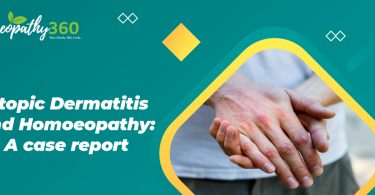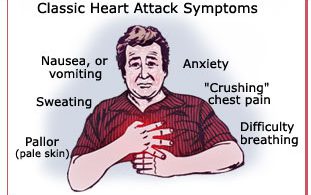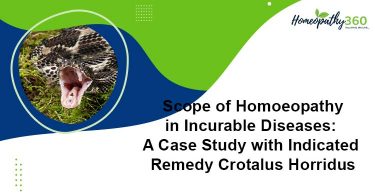
Abstract
Cochlearia armoracia Q has many clinical utility written in different literatures of homoeopathy but is used very rarely. It has many therapeutic value and usually used for different diseases such as urinary tract infections, kidney stones, toothache, sciatic nerve pain, rheumatism, colic and intestinal worms in children. This article dealt different clinical aspect of this drug with homoeopathic holistic approach.
Keywords
Cochlearia armoracia Q, Homoeopathy, Therapeutic value, Holistic approach
Introduction
Cochlearia armoracia is also known as Horse-radish.Horseradish is a perennial plant belongs to the family of Brassicaceae (which also includes mustard, broccoli, cabbage, and radish). It is a root vegetable which is cultivated and used worldwide as a spice and as a condiment. The species of horseradish is probably native to southeastern Europe and Western Asia(1). Armoracea sativa and cochlear officinalis are old-world anti-scorbutics, and Homoeopathic provings have confirmed the old experience. Armoracia has the anti-scorbutic properties of the other Cruciferae, and is very efficacious in scurvy from eating salt.The essential oil of horseradish is said to be identical with that of Sinapis(2).
Synonym: Armoracia sativa, Armoracia rusticana, Horseradish
History
Horseradish is a perennial crop used in Egyptian cuisine as far back as 1500 BC. It belongs to Brassicaceae family which is generally known for health – promoting photochemical, and it’s beneficial effects as anti cancer agents(3). According to Greek mythology, the Delphic Oracle told Apollo that the horseradish was worth its weight in gold. Dioscorides listed horseradish equally as Persicon sinapi, which Pliny’s Natural History reported as Persicon napy; Cato discusses the horseradish plant in his treatises on agriculture, and a mural in Pompeii shows the plant. Horseradish is probably the plant mentioned by Pliny the Elder in his Natural History under the name of Amoracia, and recommended by him for its medicinal qualities, and possibly the wild radish, or raphanos agrios of the Greeks. The early Renaissance herbalists Pietro Andrea Mattioli and John Gerald showed it under Raphanus. Its modern Linnaean genus Armoracia was first applied to it by Heinrich Bernhard Ruppius, in his Flora Jenensis,1745, but Linnaeus himself called it Cochlearia armoracia(1). Both root and leaves of this plant were used as a traditional medicine during the Middle Ages. The root was used as a condiment on meats in many country in which Germany, Scandinavia, and Britain were specific. It was introduced to North America during European colonization while both George Washington and Thomas Jefferson mention horseradish in garden accounts. Native Americans used it to stimulate the glands, stave off scurvy, and as a diaphoretic treatment for the effect of common cold(1).
Production
30,000 tonnes of horseradish are produced in Europe annually, of which Hungary accounts for 12,000 tonnes, making it the biggest single producer(4).
Nutritional content
In a 100-gram amount, horseradish provides 48 calories and high content of vitamin C with moderate amount of sodium, folate and dietary fiber, while other essential nutrients are negligible in content. In one tablespoon (15 grams), horseradish supplies no significant nutrient content(1).
SCOPE IN HOMOEOPATHY
Homoeopathy does not recognize any disease by its name, it summarizes disease on the basis of totality of symptoms. This totality of symptoms makes a base to select the remedy for a given case. Cochlearia armoracea is a homoeopathic remedy which is used rarely by the physician. One of the greatest use of this remedy is when applies locally on the scalp it cures dandruff. The common horseradish is a popular rubefacient which has proved of great use accidentally sometimes but only when symptoms correspond. It is proved by Dr. Franz who also introduced Asafoetida and Valeriana into materia medica. The mother tincture prepared from root of this plant(5).
The importance of this remedy in many clinical conditions such as albuminuria, aphonia, asthma, cataract, colic, cornea spots on, eruptions, eyes,affections of, gonorrhoea, gravel, headache, leucorrhoea, oedema of lungs, rheumatism, scurvy, strangury, toothache, ulcers, urinary disorders(2).
The symptoms collected during drug proving as
- Mind – Thinking is difficult for the patient especially in the evening.
- Head – Headache is changing in nature now in one then another side of head with nausea which is usually worse when opening eyes widely and sitting up.
- Eyes – There is lachrymation, spots on cornea, swelling of eyes, styes, and obscurantism of sight for some minutes.
- Face – Twitching of left corner of mouth at 4 A.M. There is soreness of upper lip and face is pale.
- Teeth – Toothache is rheumatic in nature and in carious teeth. Other conditions like scurvy of salt eaters, dental fistula. Constantly dull sensation in teeth ,feels as on chewing it moves out of the socket.
- Mouth – Taste of mouth is metallic. There is paralysis of tongue. There is biting and burning sensation on tongue. Tongue looks whitish. Odour of mouth and lungs are very offensive.
- Throat – Pharynx, larynx and posterior nares feel dry. There is scraping in throat with the feeling of nausea.Inflammed tonsils with difficulty in swallowing. The mucous is thick and viscid.
- Stomach – Profuse painless diarrhea with unnatural craving for food. Pain of stomach draws through both sides towards back. Cramps in stomach after cold exposure. There is cramps and tensive pain above the epigasrium apparently in diaphragm which is relieved by bending forward.
- Abdomen – Borborygmus feeling in the morning. Pain felt in loins and back.
- Stools and anus – Profuse painless diarrhea after nervous excitement with itching and burning at anus.Stools frequency increased and twenty times in a day. Tenesmus is present all night until morning with little discharge of blood sometimes. Involuntary passage of mucus from anus and mucous stools.
- Urinary organs – Uneasiness sensation in the region of kidneys with increased desire and secretion of urine. Urination eight or ten times a day. Urine is pale and limpid. Also applicable for strangury, albuminuria, dysuria and gravel. Urine passes with difficulty which causes burning,tenderness and inflammation of the urethra as in the first stage of gonorrhoea.
- Male sexual organs – Burning and cutting at glans felt during, before and after micturition. Gonorrhoea had been nearly removed by 1st or 2nd dilution, the 6th acted with good effect. Also applicable for impotency and chronic and neglected gonorrhoea.
- Female sexual organs – During urination black blood passes from the vagina. Milk tastes and smells like horseradish. A women suffering from headache and vomiting since climaxis.
- Respiratory organs – Aphonia with bloody spitting. Increases activity seen in respiratory organs. Oppression of breathing with hoarseness and roughness in throat. Used by singers to clear up the throat.
- Limbs – Twitching sensation in limbs. Pain in left gastrocnemius muscle. Pain in both thighs which almost drags her to pieces. Conditions like this arises due to suppressed foot sweat.
- Sleep – Sleep is very refreshing. Patient wakes with a clearer mind than usual.
- Relations – Compare: Argentina nit in diarrhea from nervous excitement. Contains an essential oil which is very similar to Sinapis.
Useful in scurvy of salt eaters.
Juniper berries antidote urinary and bladder complaints(2)(5).
Dr. Clarke inspite of this huge number of symptoms,he also mentioned the cause behind these symptoms are checked foot-sweat, nervous excitement,and cold(2).
William Boericke describes cochlearia armoracia in his book with some unique symptoms such as:
The drug has special affinity on frontal bone and sinus, antrum and salivary glands. The drug has tendency
to raise the vital forces.
Also used as a gargle in scorbutic
gums and sore throat.
In enfeebled state of stomach it is useful as condiment. When applied locally on scalp it cures dandruff(6).
Conclusion
Cochlearia armoracia Q plays vital role homoeopathically in many disease condition not only internally but also externally as in dandruff but the use of this remedy by the physician is rare. Selection of this drug based on totality of symptoms. It is less known mother tincture but highly beneficial in many respects.
References
- Cochlearia [Internate]. [Cited 2021 July 19]. Available from: https://en.wikipedia.org/wiki/Horseradish
- Clarke J.H. A Dictionary of PRACTICAL MATERIA MEDICA. VOL-I. New Delhi: B. Jain Publishers (P) LTD; 2017.
- Blue Mohammad,…Kamal Niazz. Development if new food products based on phytonutrients [Internet]. [2020; Cited 2021 July 21]. Available from: https://www.sciencedirect.com/topics/agricultural-and-biological-sciences/armoracia- rusticana
- Albert Denes. Hungary is Europe’s horseradish production king. [Internate]. [2021 March 29; cited 2021 July 21]. Available from: https://rmx.news/article/hungary-is-europe-s- horseradish-production-king/
- Hering Constantine. The guiding symptoms of our materia medica. [Internate]. Medi-T. [cited 2021 July 21]. Available from: http://homeoint.org/hering/a/arm.htm
- BOERICKE William. HOMEOPATHIC MATERIA MEDICA [Internate]. Medi-T. [cited 2021 July 21]. Available from: http://homeoint.org/books/Boericmm/c/coch.htm





